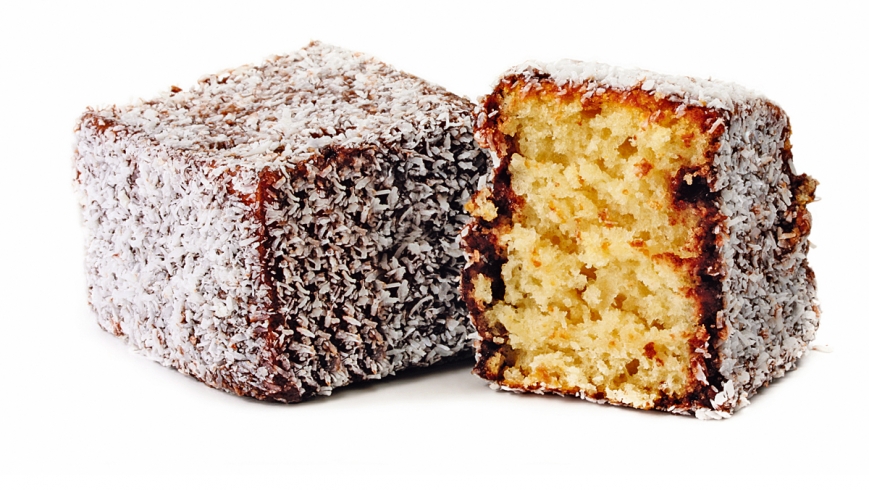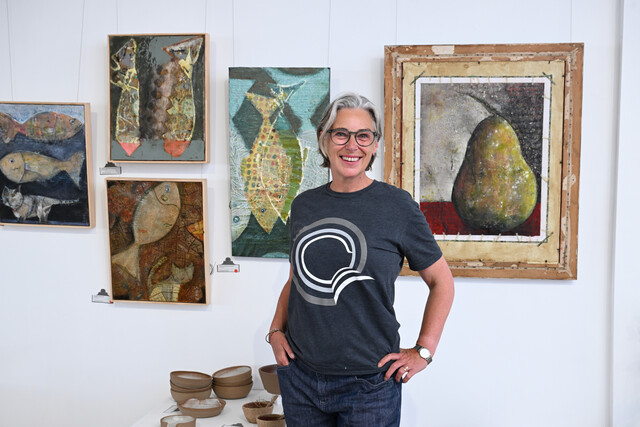‘Tis once again the season when the much-loved lamington turns from teacake to time bomb on the highly competitive turf of the show circuit.
Even as I write, women and men across Victoria are slaving in their kitchens to perfect their plates of four absolutely uniform lamingtons.
This year the Royal Melbourne Show cookery folk have added a little extra icing to the cake by introducing a new “creative” class to celebrate 60 years of lamington competition. Pitting lairy lamingtons against the traditional is certain to upset the purists who scorn even the inclusion of jam; they consider this benign Victorian variation nothing short of scandalous.
Sharon Douglas, last year’s winner of best lamington in show, welcomes the addition of the creative category. While she won’t enter this year, the St Arnaud farmer and Country Women’s Association cookery judge offers a tip that could prove the winning edge.
“It is important your cubes are actually cubes and the angles are right angles and that your edges stay sharp when you put them in the chocolate mixture because when you put them in the chocolate they can round off,” she says. “Instead of using an icing mixture for the cake, I use a chocolate gelatine mixture.”
Who will triumph in the Royal Melbourne Show’s 2014 Great Lamington Challenge is almost as deep a mystery as the origin of this little Aussie icon, which is shrouded by the desiccated coconut of time.
Despite feeble attempts by the New Zealanders to swipe the “lemington” in addition to the pavlova, there seems no doubt the great coated cake originated in Queensland.
According to legend, it was in the late 1800s that someone either accidentally dropped or deliberately dunked a sponge or butter cake, which may or may not have been already stale, into some chocolate, then rolled it in coconut to overcome a catering problem at Government House.
The incumbent governor, one Charles Cochrane-Baillie – the second Baron Lamington – was said to be deeply unimpressed his good name was given to a cake and called them “those bloody poofy woolly biscuits”.
A more prosaic but plausible story containing no profanities or politically incorrect inferences is the lamington was invented by Amy Schauer, a Brisbane Central Technical College cookery teacher. She named it in honour of the baron’s wife – the school’s patron. Indeed, there is a recipe for a whole cake dipped in chocolate icing and sprinkled in coconut in the 1909 The Schauer Australian Cookery Book.
Just as there are Jack the Ripper experts who have devoted themselves to the great murder mystery, so too are there lamington scholars who have applied their learned minds to the cookery conundrum.
Foremost is Toowoomba academic, historian and author Professor Maurice French, who produced a 272-page tome on the subject titled The Lamington Enigma: A Survey of the Evidence.
The first record of the cake being cut up into little squares appears in the Kookaburra Cookery Book, produced by Adelaide’s Lady Victoria Buxton Girls’ Club in 1912. Like pre-slicing bread, this was the making of the lamington. It swiftly spread across the land to become a staple of fund-raising cake stalls, Australia Day parties and citizenship ceremonies.
This is why, blue ribbon or no, we eat this little cake hand on heart.







